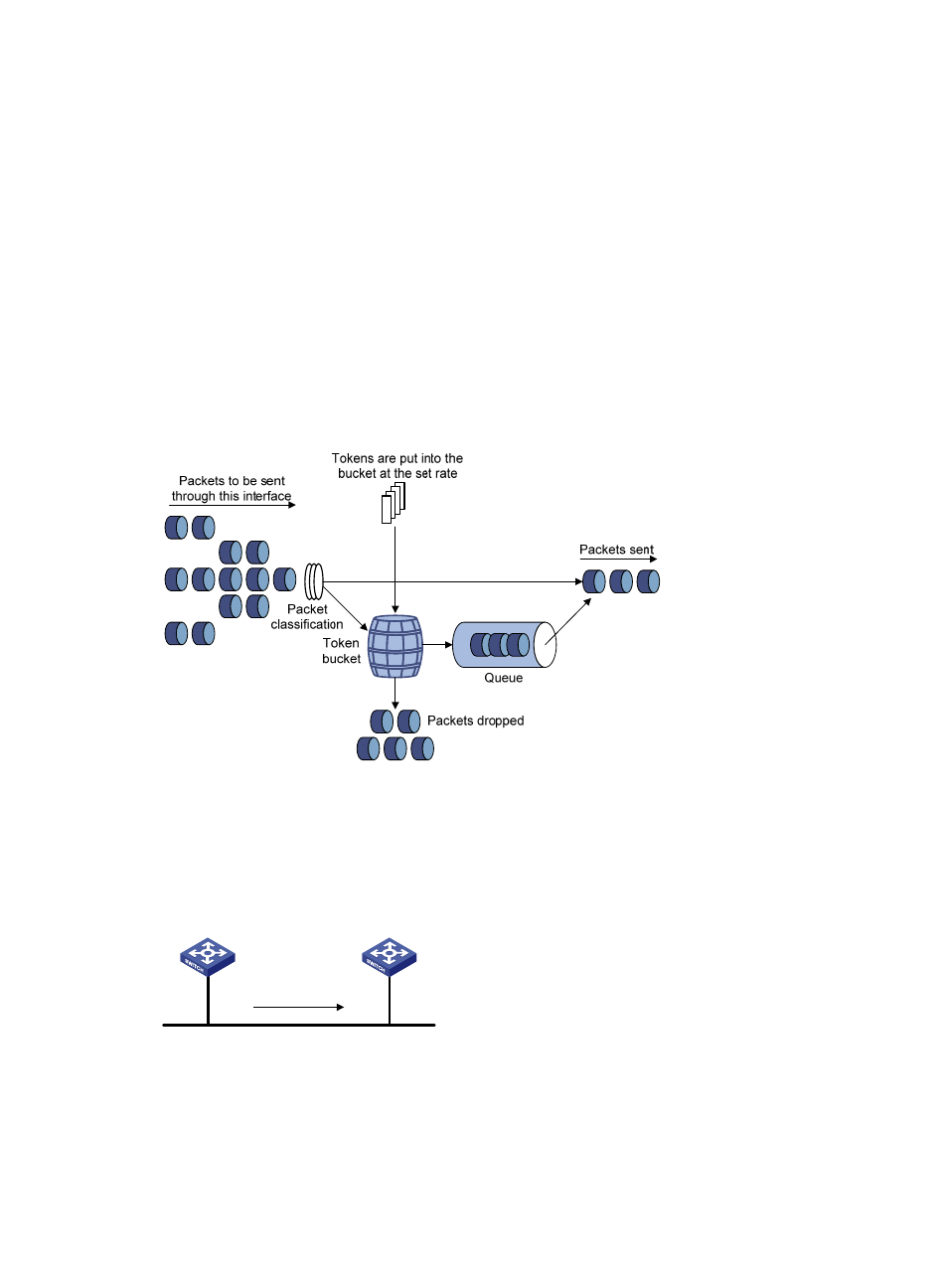Rate limit – H3C Technologies H3C S6300 Series Switches User Manual
Page 45

35
•
Forwarding the packet with its precedence re-marked if the evaluation result is "conforming."
Priorities that can be re-marked include 802.1p priority, DSCP precedence, and local precedence.
GTS
GTS supports shaping the outbound traffic. GTS limits the outbound traffic rate by buffering exceeding
traffic. You can use GTS to adapt the traffic output rate on a device to the input traffic rate of its connected
device to avoid packet loss.
The differences between traffic policing and GTS are as follows:
•
Packets to be dropped with traffic policing are retained in a buffer or queue with GTS, as shown
in
. When enough tokens are in the token bucket, the buffered packets are sent at an even
rate.
•
GTS can result in additional delay and traffic policing does not.
Figure 8 GTS
For example, in
, Device B performs traffic policing on packets from Device A and drops packets
exceeding the limit. To avoid packet loss, you can perform GTS on the outgoing interface of Device A so
that packets exceeding the limit are cached in Device A. Once resources are released, GTS takes out the
cached packets and sends them out.
Figure 9 GTS application
Rate limit
Rate limit controls the rate of inbound and outbound traffic. The outbound traffic is taken for example.
Device A
Device B
Physical link
- H3C S5820V2 Series Switches H3C S5830 Series Switches H3C S5830V2 Series Switches H3C S3600V2 Series Switches H3C S6800 Series Switches H3C S3100V2 Series Switches H3C S12500-X Series Switches H3C S5560 Series Switches H3C WX6000 Series Access Controllers H3C WX5000 Series Access Controllers H3C WX3000 Series Unified Switches H3C LSWM1WCM10 Access Controller Module H3C LSWM1WCM20 Access Controller Module H3C LSQM1WCMB0 Access Controller Module H3C LSRM1WCM2A1 Access Controller Module H3C LSBM1WCM2A0 Access Controller Module H3C S9800 Series Switches H3C S5130 Series Switches H3C S5120 Series Switches
